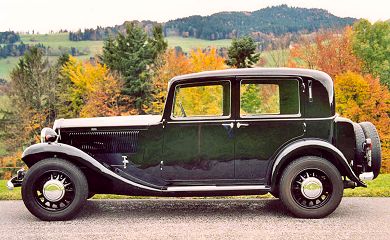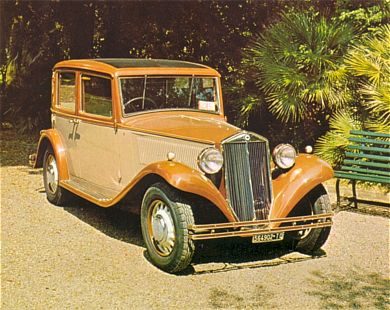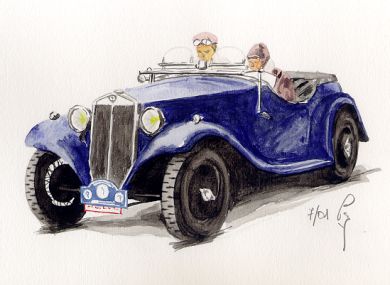 |
||
  |
  |
|
|
|
|
|||||
|
It is well known in Lancia circles that famous racing drivers have used Aurelia B20s and Flaminias as their regular cars: Taruffi, Hawthorn, Collins, and Fangio, to mention a few. This comes as no surprise, as the Aurelia and Flaminia had, by Italian standards, large engines with plenty of power and state-of-the-art suspension systems. However, it is the Augusta with only a 1,200cc engine that can lay claim to having been the Lancia to be held in high esteem as an every-day car by the contemporary racing fraternity. 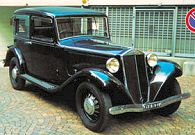
Tazio Nuvolari, Italy's most famous pre-war racing driver, is well known to have loved his Augusta. In his youth, Tazio developed a family reputation for getting a lot of speed out one horse power, when he would jump on to a horse from the family stable and gallop off, sans saddle, stirrups, and bridle. So, yes, by his boyhood standards, the Augusta's 35 BHP, provided plenty of zipp, but later on he was racing Maserati, Alfa Romeo, Bugatti and even the horrendously powerful Auto Union racing cars with some 520 horsepower on call. 
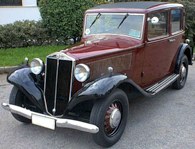
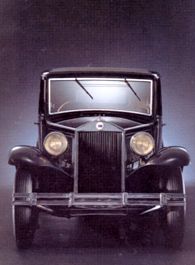
Note from Huib Geurink, your webmaster. In 1935 mechanics at the Lancia dealers in Italy went on strike. The Augusta was so reliable and needed so little maintenance that they feared they would loose their jobs. Perhaps it is the "truest" Lancia. It certainly is the most undervalued Lancia. Except by the famous race drivers. They recognized an outstanding car when they saw one and above all, when they drove one. |
|
A further example of a famous racing driver's appreciation of the merits of a small Lancia to which I have also not seen other references, is none other than Juan Manuel Fangio. This time I had the even greater privilege of having Fangio 'drop in' to my home workshop back in 1978, on my Birthday, by complete coincidence. In 1949 the Automobile Club of Argentina and a number of businessmen sponsored Fangio to compete in the Grand Prix series. Driving a Maserati 4CLT/48 he achieved an astonishing six wins from ten starts. Not surprisingly, he was then 'signed up' as a 'works' driver with Alfa Romeo for the 1950 season. As an Alfa works driver he was given an Alfa as an every-day car. 
On seeing my Ardea, he smiled, sighed and said in Italian: "I was very sorry to have to sell my Ardea when I started to drive for Alfa Romeo, it was such a clever little car". He then went on to recount in Spanish a funny story about selling the Ardea. A lady responded to his advertisement and he took her for a demonstration drive, after which she bought the car and drove it away. A couple of days later, she returned, claiming something had gone wrong with it. She said that it was now much slower than when it was demonstrated to her (Hardly surprising, when you take into account the demonstration driver). Anyway, Fangio took her out for another short drive and the car went quickly to 106 KPH, as it had done on the first demonstration. Note: only in Italy would a prospective female buyer of a second hand car bother to note the top speed of a car during a short demonstration run. The lady apologised for bothering Fangio and drove off satisfied that the car was not defective. However, a day later, she was back to say that when she drove it flat out, the car would only reach 93 KPH. It was than that the lire dropped! Fangio had omitted to point out that the Ardea had a cinque marce (5 speed) gearbox and of course it had to be in fifth gear for the little 903 cc car to reach 106 KPH! The Ardea was the first production car with a five speed gearbox, something that only a small proportion of the public would have been aware of at the time. |
